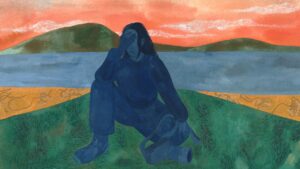
Civil Defense estimates billion-real losses due to extreme climate events in Rio Grande do Sul (RS). The most recurring among those events is drought, which has struck the state hard in the last two years. According to the institution, between October 2019 and January 2020, 105 municipalities declared a state of emergency due to drought, with estimated losses of R$ 3.2 billion to the RS economy regarding both private and public properties. The 2020-2021 scenario is no different – in the same time period, 107 municipalities entered a state of emergency, with losses estimated to be R$ 2.6 billion.
News of natural disasters have been commonplace to the RS population, due to lack of rain or due to damage caused by excessive rain, another very common kind of extreme event. A remarkable example can be seen in Camargo, which has about 3,000 inhabitants and is situated in the state’s northern area. In February 2020, five days after declaring a state of emergency due to drought, the municipality was struck by heavy rain and wind which unroofed 70 houses. The state of emergency was renewed for different reasons.
“We had already been having issues with lack of water and great losses in agricultural production. Practically 70% of the municipality’s revenue comes from the primary sector. We had already been dealing with that hardship and now, tomorrow we’ll be declaring a state of emergency and disaster even, I believe, due to the heavy wind”, declared then the mayor at the time, Eliani Trentin.
Climatologists believe that extreme situations should become even more commonplace in the following years. That is one of the various effects caused by global climate change. An analysis from the U.S. National Aeronautics and Space Administration (NASA) published on January 14 showed that global temperatures rose 1.02°C in 2020 in relation to the moving averages from the years 1951 and 1980, which makes last year the hottest ever measured by the institution.
“The previous record warm year, 2016, received a significant boost from a strong El Niño [a change in water surface temperature distribution in the Pacific Ocean]. The lack of a similar assist from El Niño this year is evidence that the background climate continues to warm due to greenhouse gases”, stated Goddard Institute for Space Studies director Gavin Schmidt in a press release. [Obs.: busquei e utilizei a frase original do diretor]
Beyond global warming, the Brazilian scenario contributes significantly to the extreme events with deforestation, according to climatologists. The deforestation rate disclosed by the National Institute for Space Research (Inpe) grew 9.5% in a year, reaching 11,000 square kilometers in deforested area between August 2019 and July 2020 – a time interval which calculates the complete rain/drought cycle. The goal proposed at the Copenhagen Climate Convention (in Denmark) in 2009, which was undersigned by Brazil, was less than a third of said number (around 3,000 square kilometers).
According to Francisco Aquino, a climatologist from the Geography Department of the Universidade Federal do Rio Grande do Sul (UFRGS), deforestation in the Amazon is directly correlated to the drought seen in Rio Grande do Sul.
“The humidity circulation in the atmosphere has been undergoing changes, and so have the water regimes. Adding it to human activity, this causes an environmental crisis. ‘Crisis’ is a good word to use at the moment.”, the climatologist states.
Aquino muses that excessive deforestation causes changes in the water regime – the set of variations in rains and rivers – all over Brazil, not just in the Amazon. That is due to the humidity in northern Brazil helping keep an equilibrium between rain and drought periods.
“The Amazon has often supplied the south region and gotten a water deficit. The humidity it creates, right now, may not be enough to provide for itself. What the scientific community has been warning is that we’re reaching the limit for the systems to augment these flaws and for the ecosystems to collapse. They won’t be able to recover if we don’t stop logging. We’ve got record numbers in the Amazon due to lack of oversight, since somebody does logging and then creates a fire to clear the area. The fire spins out of control due to the region being drier than it should be.”
Meteorologist Cátia Valente, who is responsible for the Rio Grande do Sul Civil Defense Situation Room, muses that the connection between both facts may not be easily noticeable. According to her, peak deforestation periods are small in comparison to the time scale of climate change. However, Cátia emphasizes that extreme events are becoming the rule:
“They have been more and more frequent and intense. Whether they’re related to climate change, science can say.”
Cátia notices that the presence of the La Niña phenomenon, which causes a cooling of Pacific Ocean waters, has had an enormous impact on rain distribution in Rio Grande do Sul in the last few years.
“In the summer of 2020, we had a prolonged drought, which extended into autumn. La Niña acted during the spring, disfavoring rain once again. We’ve had a few big rain events, in the northern part of the state, but they were one-offs. Last year, we did not recover from the water deficit that had been happening since the summer. Thus far, we’ve had a hydrological deficit of 300-800 mm accrued in the state”, the meteorologist clarifies.
Cátia is one of the people responsible for sounding the alarm for extreme climate events, which people can receive through text messages on their cell phones. Forecasting the next months, she declares that the rain from the beginning of January improved the situation slightly, but the state’s water system “continues to be compromised”.
“At least until the middle of next year, we’ll be having irregular rain and water deficit issues. The outlook is that the situation could improve starting this year’s second half, with the Pacific Ocean being less cold. At least until the middle of the year, the scene doesn’t look good”, she states.
Meanwhile, professor Francisco Aquino notes the necessity of enhancing environmental oversight, not simply to reduce deforestation in the Amazon, but also to recompose the climate system as a whole – which includes reducing the damage of the drought in Rio Grande do Sul.
“A forest like the Amazon doesn’t have big stretches of drought and dryness. It is exuberant due to refuelling and recomposing itself. What’s been happening in the last four decades is that every year we cause damage. When public policy is favorable towards oversight,
towards control, you realize that the system recomposes itself, it wants to improve. When we loosen oversight and control, the system degrades swiftly”, Aquino states.
The impact of climate change in practice: see, in the gallery below, extreme events captured by GZH photographers in Rio Grande do Sul throughout 2020
Extreme climate events, including rapid yet violent storms, cause effects on agriculture that are felt even in the lives of urban area dwellers. In June 2020, the effect of drought on the RS per capita income was to the tune of 3.3%, directly affecting the production of soy (-27.7%), corn (-19.3%) and tobacco (-22%). Produce such as sweetcorn, spinach and green beans had reduced harvests due to lack of rain, which raised their prices in supermarket shelves.
“It affects general biodiversity. The produce is more expensive. You’re going to plan the net 50 years knowing you’ll be spending more money on insurance, on losses. Every farmer, when they go look for more financing, more insurance, faces greater risks. The bank says there is greater risk because climate change is real. It’s automatic”, says Aquino.
The climatologist muses that the pandemic shows predatory relationships towards the environment will worsen these problems in the years to come.
“The pandemic is a fruit of deforestation, of environmental issues, of general degradation. It’s a typical example of how detached our lifestyle is from the planet’s reality. For some people, we may have investments and profitability, using natural resources as aggressively as possible, without thinking of tomorrow. This will utterly doom us all.”
Cátia Valente also proposes that environmental education is essential to improve conservation efforts and reduce damage to nature, but that it will bring a fresh coat of belonging to new generations.
“The community must feel like they belong to the environment. We must explain what climate change is, why and how it happens and, at the same time, make it so the neighborhood kid knows all the garbage they use goes somewhere and may influence stronger rainfall to come and all its consequences. I believe in environmental education and in the actions of the community, in the neighborhoods, in the more practical sense. Science needs to work more in management, with public policies, bringing universities to the decision making process, with public and private initiatives”, she states.
This story, originally published by Zero Hora in Brazil, has been shared as part of World News Day 2021, a global campaign to highlight the critical role of fact-based journalism in providing trustworthy news and information in service of humanity. #JournalismMatters.




